Vladimir Tatlin (1885—1953)
- user warning: Table './ci19934_virtualr/cache_filter' is marked as crashed and last (automatic?) repair failed query: SELECT data, created, headers, expire FROM cache_filter WHERE cid = '3:57210426d4fa3d4e39216bee561eb82d' in /var/www/fastuser/data/www/virtualrm.spb.ru/includes/database.mysql.inc on line 174.
- user warning: Table './ci19934_virtualr/cache_filter' is marked as crashed and last (automatic?) repair failed query: LOCK TABLES cache_filter WRITE in /var/www/fastuser/data/www/virtualrm.spb.ru/includes/database.mysql.inc on line 174.
- user warning: Table './ci19934_virtualr/cache_filter' is marked as crashed and last (automatic?) repair failed query: UPDATE cache_filter SET data = '<table>\n<tr>\n<td>\n<span class=\"inline inline-right\"><a href=\"https://virtualrm.spb.ru/files/images/ Матрос_0.jpg\" onclick=\"launch_popup(8792, 858, 850); return false;\" target=\"_blank\"><img src=\"https://virtualrm.spb.ru/files/images/ Матрос_0.preview big (250x250).jpg\" alt=\"Tatlin V. Sailor. 1911\" title=\"Tatlin V. Sailor. 1911\" class=\"image image-preview big (250x250) \" width=\"250\" height=\"248\" /></a><span class=\"caption\" style=\"width: 248px;\"><strong>Tatlin V. Sailor. 1911</strong></span></span><br />\n<b>Sailor</b><br />\n1911<br />\nOil on canvas. 71.5 x 71.5</p>\n<p>Although works by Vladimir Tatlin are not often encountered in art collections, the artist remains one of the unchallenged pioneers of the Russian avant-garde. Tatlin’s acquaintance and friendship with Mikhail Larionov led to the appearance of Neo-Primitive tendencies in his painting and graphic art in the early 1910s. The artist closely observed the environment, way of life and outer appearances of the sailors, fishermen, traders and other colourful inhabitants of the southern port of Odessa. The level of generalisation and the correlation of the image to the background, however, pay tribute to</p>\n<p>Old Russian icon-painting. The result is a sharp contrast between the main character and the small figures in the background, which are arranged like the scenes in an hagiographic icon, creating a sharp and disquietening rhythm of contours and white patches on the sailor’s face and clothes. Sailor unites elements of self-portraiture and the typical. The painting manages to both incorporate personal characteristics and express the artist’s impulsive creative quests.</p>\n<p><br><br />\n<br></p>\n</td>\n</tr>\n<tr>\n<td>\n<span class=\"inline inline-left\"><a href=\"https://virtualrm.spb.ru/files/images/-Натурщица-.jpg\" onclick=\"launch_popup(8791, 1000, 797); return false;\" target=\"_blank\"><img src=\"https://virtualrm.spb.ru/files/images/-Натурщица-.preview big (250x250).jpg\" alt=\"Tatlin V. Artist’s Model. 1913\" title=\"Tatlin V. Artist’s Model. 1913\" class=\"image image-preview big (250x250) \" width=\"250\" height=\"199\" /></a><span class=\"caption\" style=\"width: 248px;\"><strong>Tatlin V. Artist’s Model. 1913</strong></span></span><br />\n<b>Artist’s Model</b><br />\n1913<br />\nOil on canvas. 104.5 x 130.5</p>\n<p>In 1912, following his break with Mikhail Larionov and his group, Vladimir Tatlin opened his own studio on Ostozhenka in Moscow, where he and a group of followers painted nude models. Tatlin’s large paintings were influenced by the works of Pablo Picasso, which the Russian artist could see in the private collections of Sergei Schukin and Ivan Morozov and at exhibitions of modern French painting in Moscow. Seeking his own form of Cubism, Tatlin borrowed liberally from the traditions of Old Russian icon-painting.</p>\n<p>Artist’s Model reflects his tendency towards generalisation, synthesis and the plastic significance of form. The large colour planes, the role of the silhouette and the simplified contour of the figure add expressiveness to the artistic quests. The rhythmic and constructive forms and the laconic tones are justified in respect to the correlations of the masses and the patches of colour. Opening new doors in art, Tatlin successfully combined the expressive plastics of Old Russian icon-painting and Cubism.</p>\n<p><br><br />\n<br>\n</td>\n</tr>\n</table>\n<div class=\"image-clear\"></div>', created = 1766487694, expire = 1766574094, headers = '' WHERE cid = '3:57210426d4fa3d4e39216bee561eb82d' in /var/www/fastuser/data/www/virtualrm.spb.ru/includes/database.mysql.inc on line 174.
- user warning: Table './ci19934_virtualr/cache_filter' is marked as crashed and last (automatic?) repair failed query: SELECT data, created, headers, expire FROM cache_filter WHERE cid = '3:833c55acb3c68560dc47f701825351cb' in /var/www/fastuser/data/www/virtualrm.spb.ru/includes/database.mysql.inc on line 174.
- user warning: Table './ci19934_virtualr/cache_filter' is marked as crashed and last (automatic?) repair failed query: LOCK TABLES cache_filter WRITE in /var/www/fastuser/data/www/virtualrm.spb.ru/includes/database.mysql.inc on line 174.
- user warning: Table './ci19934_virtualr/cache_filter' is marked as crashed and last (automatic?) repair failed query: UPDATE cache_filter SET data = '<table style=\"width: 100%;\" align=\"center\">\n<tbody>\n<tr>\n<td align=\"center\"><!--LiveInternet counter--></p>\n<script type=\"text/javascript\">// <![CDATA[\ndocument.write(\"<a href=\'https://www.liveinternet.ru/click\' target=_blank><img src=\'https://counter.yadro.ru/hit?t23.10;r\" + escape(document.referrer) + ((typeof(screen)==\"undefined\")?\"\":\";s\"+screen.width+\"*\"+screen.height+\"*\"+(screen.colorDepth?screen.colorDepth:screen.pixelDepth)) + \";u\" + escape(document.URL) + \";\" + Math.random() + \"\' border=0 width=88 height=15 alt=\'\' title=\'LiveInternet\'><\\/a>\")\n// ]]></script><p><!--/LiveInternet--></td>\n</tr>\n<tr>\n<td align=\"center\"><img src=\"https://counter.rambler.ru/top100.cnt?1604604\" border=\"0\" alt=\"\" width=\"1\" height=\"1\" /></td>\n</tr>\n<tr>\n<td align=\"center\"><!-- SpyLOG --></p>\n<script id=\"spylog_code\" type=\"text/javascript\" src=\"https://tools.spylog.ru/counter_cv.js\">// <![CDATA[\n\n// ]]></script><p><noscript><br />\n<a href=\"https://u11433.00.spylog.com/cnt?cid=1143300&f=3&p=0\" target=\"_blank\"><br />\n<img src=\"https://u11433.00.spylog.com/cnt?cid=1143300&p=0\" alt=\"SpyLOG\" border=\"0\" width=\"1\" height=\"1\"></a><br />\n</noscript><!--/ SpyLOG --></td>\n</tr>\n</tbody>\n</table>\n', created = 1766487694, expire = 1766574094, headers = '' WHERE cid = '3:833c55acb3c68560dc47f701825351cb' in /var/www/fastuser/data/www/virtualrm.spb.ru/includes/database.mysql.inc on line 174.
- user warning: Table './ci19934_virtualr/cache_filter' is marked as crashed and last (automatic?) repair failed query: SELECT data, created, headers, expire FROM cache_filter WHERE cid = '3:f95e710884aeb25d59aef3a5c83c9ea2' in /var/www/fastuser/data/www/virtualrm.spb.ru/includes/database.mysql.inc on line 174.
- user warning: Table './ci19934_virtualr/cache_filter' is marked as crashed and last (automatic?) repair failed query: LOCK TABLES cache_filter WRITE in /var/www/fastuser/data/www/virtualrm.spb.ru/includes/database.mysql.inc on line 174.
- user warning: Table './ci19934_virtualr/cache_filter' is marked as crashed and last (automatic?) repair failed query: UPDATE cache_filter SET data = '<p style=\"text-align: center;\">\n<object id=\"myIdLeft\" classid=\"clsid:D27CDB6E-AE6D-11cf-96B8-444553540000\" width=\"160\" height=\"160\"><param name=\"movie\" value=\"/img/shop_banner_160.swf\" /><!--[if !IE]>--> <object title=\"Adobe Flash Player\" data=\"/img/shop_banner_160.swf\" type=\"application/x-shockwave-flash\" width=\"160\" height=\"160\"> <!--<![endif]--><a href=\"https://rusmuseumshop.com/\"><img src=\"/img/shop_banner_160.jpg\" border=\"0\" width=\"160\" height=\"160\" /></a><!--[if !IE]>--></object><p> <!--<![endif]--> </p>\n</object><p><a title=\"Онлайн-лекции в Русском музее\" href=\"https://rusmuseumvrm.ru/online_resources/lections/index.php\"><span class=\"inline inline-center\"><img src=\"https://virtualrm.spb.ru/files/images/ Лекции_small.preview200.jpg\" alt=\"\" title=\"\" class=\"image image-preview200 \" width=\"200\" height=\"59\" /></span></a> </p>\n<p style=\"text-align: center;\"> </p>\n<p style=\"text-align: center;\"><strong style=\"color: #003366;\">Проекты</strong></p>\n<p><a href=\"/ru/events/rmgallery\" target=\"_self\"><span class=\"inline inline-center\"><img src=\"https://virtualrm.spb.ru/files/images/gif_4\" alt=\"\" title=\"\" class=\"image image-_original \" width=\"209\" height=\"69\" /></span></a></p>\n<p><a href=\"/rmtour/\" target=\"_blank\"><span class=\"inline\"><img class=\"image image-img_assist_custom\" src=\"/files/images/prR_I_m.gif\" border=\"0\" alt=\"rmtour\" title=\"rmtour\" width=\"160\" height=\"74\" style=\"display: block; margin-left: auto; margin-right: auto;\" /></span></a></p>\n<p><a href=\"https://www.googleartproject.com/ru/collection/the-state-russian-museum-st-petersburg/\" target=\"_blank\"><span class=\"inline\"><img class=\"image image-img_assist_custom\" src=\"/files/images/viewer123.png\" border=\"0\" alt=\"Google Art Project\" title=\"Google Art Project\" width=\"160\" height=\"74\" style=\"display: block; margin-left: auto; margin-right: auto;\" /></span></a></p>\n<p> </p>\n<p style=\"text-align: center;\"> <span style=\"color: #003366;\"><strong>Мы в соц.сетях</strong></span></p>\n<table align=\"center\">\n<tbody>\n<tr align=\"center\" valign=\"middle\">\n<td><a title=\"Группа vkontakte.ru\" href=\"https://vk.com/virtualrm\" target=\"_blank\"><span class=\"inline inline-left\"><img src=\"https://virtualrm.spb.ru/files/images/vk_0.mini.png\" alt=\"\" title=\"\" class=\"image image-mini \" width=\"50\" height=\"50\" /></span></a></td>\n<td><a title=\"Страница проекта на Instagram/com\" href=\"https://instagram.com/virtualrm\" target=\"_blank\"><span class=\"inline inline-left\"><img src=\"https://virtualrm.spb.ru/files/images/Instagram-logo.mini.png\" alt=\"\" title=\"\" class=\"image image-mini \" width=\"50\" height=\"50\" /></span></a></td>\n</tr>\n<tr align=\"center\" valign=\"middle\">\n<td><a title=\"Официальный канал проекта на YouTube\" href=\"https://www.youtube.com/user/RMVBDepartment\" target=\"_blank\"><span class=\"inline inline-none\"><img src=\"https://virtualrm.spb.ru/files/images/youtube_icon___recreation_by_izyarts-d52tyrb.mini.jpg\" alt=\"\" title=\"\" class=\"image image-mini \" width=\"50\" height=\"50\" /></span></a></td>\n<td><a title=\"Страница проекта на Facebook\" href=\"https://www.facebook.com/virtualrm\" target=\"_blank\"><span class=\"inline inline-none\"><img src=\"https://virtualrm.spb.ru/files/images/facebook_icon.mini.png\" alt=\"\" title=\"\" class=\"image image-mini \" width=\"50\" height=\"50\" /></span></a></td>\n</tr>\n</tbody>\n</table>\n<p> </p>\n<p style=\"text-align: center;\"><strong style=\"color: #003366;\">Наши награды</strong></p>\n<p><span class=\"inline inline-center\"><a href=\"https://virtualrm.spb.ru/files/images/Rovesniki.jpg\" onclick=\"launch_popup(13137, 2238, 2706); return false;\" target=\"_blank\"><img src=\"https://virtualrm.spb.ru/files/images/Rovesniki.gallery.jpg\" alt=\"\" title=\"\" class=\"image image-gallery \" width=\"124\" height=\"150\" /></a></span></p>\n<p><span class=\"inline inline-center\"><a href=\"https://virtualrm.spb.ru/files/images/P1400317_2.jpg\" onclick=\"launch_popup(13139, 2776, 1240); return false;\" target=\"_blank\"><img src=\"https://virtualrm.spb.ru/files/images/P1400317_2.gallery.jpg\" alt=\"\" title=\"\" class=\"image image-gallery \" width=\"150\" height=\"67\" /></a></span></p>\n<p><span class=\"inline inline-center\"><a href=\"https://virtualrm.spb.ru/files/images/ 2013.jpg\" onclick=\"launch_popup(20297, 1236, 1747); return false;\" target=\"_blank\"><img src=\"https://virtualrm.spb.ru/files/images/ 2013.gallery.jpg\" alt=\"\" title=\"\" class=\"image image-gallery \" width=\"106\" height=\"150\" /></a></span></p>\n<p><span class=\"inline inline-center\"><a href=\"https://virtualrm.spb.ru/files/images/jpg_248\" onclick=\"launch_popup(20313, 1500, 2062); return false;\" target=\"_blank\"><img src=\"https://virtualrm.spb.ru/files/images/jpg_248.gallery.jpg\" alt=\"\" title=\"\" class=\"image image-gallery \" width=\"109\" height=\"150\" /></a></span></p>\n<p><span class=\"inline inline-center\"><a href=\"https://virtualrm.spb.ru/files/images/ за подготовку.jpg\" onclick=\"launch_popup(20262, 2001, 2776); return false;\" target=\"_blank\"><img src=\"https://virtualrm.spb.ru/files/images/ за подготовку.gallery.jpg\" alt=\"\" title=\"\" class=\"image image-gallery \" width=\"108\" height=\"150\" /></a></span></p>\n<p> </p>\n<p style=\"text-align: center;\"><a style=\"text-align: center;\" href=\"/ru/banners_code\">Наши баннеры</a></p>\n<div class=\"image-clear\"></div>', created = 1766487694, expire = 1766574094, headers = '' WHERE cid = '3:f95e710884aeb25d59aef3a5c83c9ea2' in /var/www/fastuser/data/www/virtualrm.spb.ru/includes/database.mysql.inc on line 174.
- user warning: Table './ci19934_virtualr/cache_filter' is marked as crashed and last (automatic?) repair failed query: SELECT data, created, headers, expire FROM cache_filter WHERE cid = '3:3b908d02da23e74f40748a6c758c50e6' in /var/www/fastuser/data/www/virtualrm.spb.ru/includes/database.mysql.inc on line 174.
- user warning: Table './ci19934_virtualr/cache_filter' is marked as crashed and last (automatic?) repair failed query: LOCK TABLES cache_filter WRITE in /var/www/fastuser/data/www/virtualrm.spb.ru/includes/database.mysql.inc on line 174.
- user warning: Table './ci19934_virtualr/cache_filter' is marked as crashed and last (automatic?) repair failed query: UPDATE cache_filter SET data = '<p style=\"text-align: center;\"><span style=\"font-size: 12px; color: #f0f0f0;\">© 2008-2015 <a href=\"http://rusmuseum.ru/\" target=\"_blank\"><span style=\"color: #f0f0f0;\">Russian Museum</span></a></span><br /><a href=\"http://virtualrm.spb.ru/en/node/13324\"><span style=\"font-size: 12px; color: #f0f0f0;\">Terms of use</span></a></p>\n', created = 1766487694, expire = 1766574094, headers = '' WHERE cid = '3:3b908d02da23e74f40748a6c758c50e6' in /var/www/fastuser/data/www/virtualrm.spb.ru/includes/database.mysql.inc on line 174.


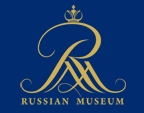






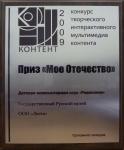

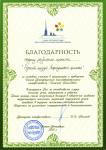
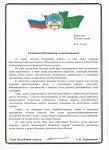
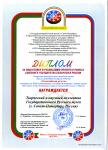
.jpg)
.jpg)